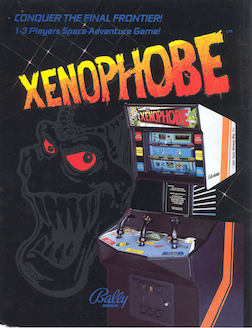
Xenophobe is a video game developed by Bally Midway and released in arcades in 1987. Starbases, moons, ships, and space cities are infested with aliens, and the players have to kill the aliens before each is completely overrun. The screen is split into three horizontally-scrolling windows, one for each of up to three players, yet all players are in the same game world.

Treasure Island Dizzy is a puzzle video game published in 1989 by Codemasters for the Amstrad CPC and ZX Spectrum, and later ported to the Commodore 64, NES, Amiga, Atari ST and Atari Jaguar.

Wonder Boy in Monster Land, known by its original arcade release as Wonder Boy: Monster Land, is a platform video game developed by Westone Bit Entertainment and released by Sega in Japanese arcades in 1987 and for the Master System in 1988, with a number of other home computer and console ports following. The game is the sequel to the 1986 game Wonder Boy and takes place eleven years after the events in the previous game. After enjoying over a decade of peace on Wonder Land following the defeat of the evil King by Tom-Tom, later bestowed the title "Wonder Boy", a fire-breathing dragon called the MEKA dragon appeared; he and his minions conquered Wonder Land, turning it into "Monster Land". The people, helpless due to their lack of fighting skill, call for Wonder Boy, now a teenager, to destroy the monsters and defeat the MEKA dragon. Players control Wonder Boy through twelve linear levels as he makes his way through Monster Land to find and defeat the MEKA dragon. Players earn gold by defeating enemies and buy weapons, armor, footwear, magic, and other items to help along the way.

Moon Patrol is a 1982 arcade video game developed and released by Irem. It was licensed to Williams for distribution in North America. The player controls a Moon buggy which can jump over and shoot obstacles on a horizontally scrolling landscape as well as shoot aerial attackers. Designed by Takashi Nishiyama, Moon Patrol is often credited with the introduction of full parallax scrolling in side-scrolling games. Cabinet art for the Williams version was done by Larry Day. Most of the home ports were from Atari, Inc., sometimes under the Atarisoft label.

Kung-Fu Master, known as Spartan X in Japan, is a side-scrolling beat 'em up developed by Irem as an arcade video game in 1984, and distributed by Data East in North America. Designed by Takashi Nishiyama, the game was based on Hong Kong martial arts films. It is a loose adaptation of the Jackie Chan, Sammo Hung, and Yuen Biao film Wheels on Meals (1984), called Spartan X in Japan, with the protagonist Thomas named after Jackie Chan's character in the film. The game is also heavily inspired by the Bruce Lee film Game of Death (1972), which was the basis for the game's concept. Nishiyama, who had previously designed the side-scrolling shooter Moon Patrol (1982), combined fighting elements with a shoot 'em up gameplay rhythm. Irem and Data East exported the game to the West without the Spartan X license.

Star Goose is a vertically scrolling shooter that was published for the Amiga, Atari ST, and MS-DOS by Logotron in 1988. The player controls Scouser-Gitt, who pilots the eponymous Star Goose, a vessel that has been commissioned to scour the planet Nom and collect 48 crystals. Players must collect all six crystals in each of the game's eight levels to advance, while at the same time avoiding or destroying enemies and maintaining their shield, ammunition, and fuel levels. The game's surfaces are contoured, which affects the way that bullets travel, and contain tunnels that switch modes to a three-dimensional perspective where the player can replenish their resources.

There have been several video games based on the 1991 film Hook. A side-scrolling platform game for the Nintendo Entertainment System (NES) and Game Boy was released in the United States in February 1992. Subsequent side-scrolling platform games were released for the Commodore 64 and the Super Nintendo Entertainment System (SNES), and an arcade beat ‘em up by Irem later in 1992, followed by versions for the Sega CD, Sega Genesis, and Sega's handheld Game Gear console in 1993.

Navy SEALs is a shoot 'em up platform video game developed and published by Ocean Software. It was first released in the United Kingdom for the Amstrad CPC, Amstrad GX4000 and Commodore 64 in 1990. It was later re-released in the rest of Europe for the ZX Spectrum, Atari ST and Amiga home computers in the following year. It was then ported to the Game Boy on 1 September 1991 in the United States. The game is based on the film of the same name and follows the protagonist, Lieutenant Dale Hawkins, progressing through five side-scrolling levels.

Dropzone is a horizontally scrolling shooter developed by Archer Maclean for Atari 8-bit computers and published in 1984 by U.S. Gold. It was ported to the Commodore 64, and later released for the Nintendo Entertainment System, Game Boy, Game Gear, and Game Boy Color.

Black Lamp is a platform game, originally published by Firebird Software for the Amiga, Atari ST, Commodore 64 and ZX Spectrum computers in 1988, and later published by Atari Corporation for the Atari 8-bit computers in 1989.

Cloud Kingdoms is a puzzle game published by Millennium Interactive for the Amiga, Atari ST, Commodore 64, and MS-DOS in 1990. The player controls Terry, a green bouncing sphere, on a quest to recover his magic crystals that have been stolen by Baron von Bonsai. To do so, he must travel through the eponymous Cloud Kingdoms, avoiding enemies and hazards while collecting all of the crystals within the game's time limit. The game was developed by Dene Carter at Logotron, with sounds and music composed by David Whittaker.

Survivors is a puzzle video game published by Atlantis Software in 1986 for the ZX Spectrum. It was ported to the MSX, Atari 8-bit computers, Commodore 64, Commodore 16, Acorn Electron, and BBC Micro and the Amstrad CPC (1988). It is based on the "rocks and diamonds" mechanics of Boulder Dash.
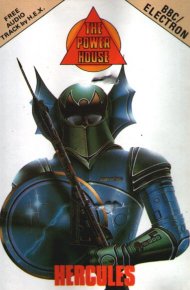
Hercules is a platform video game written by Steve Bak for the Commodore 64 and published by Interdisc in 1984. It was reissued in 1986 by Alpha Omega and ported to the Acorn Electron, BBC Micro, Commodore 16, Plus/4, and ZX Spectrum. Alpha Omega changed its name to The Power House shortly after publishing the game.

The Real Ghostbusters is a 1987 shoot 'em up arcade game developed and published by Data East. It is loosely based on Ghostbusters. In Japan, Data East released it as a non-Ghostbusters arcade game under the title Meikyuu Hunter G. In 1989, Activision published The Real Ghostbusters for Amiga, Amstrad CPC, Atari ST, Commodore 64, and ZX Spectrum.

Frantic Freddie is a 1983 platform game for the Commodore 64 written by Kris Hatlelid and Gregor Larson and published by Commercial Data Systems.

Hero of the Golden Talisman is an action-adventure video game developed by British studio Mr Chip Software and published by Mastertronic in 1985 for the Commodore 64. A port to the Amstrad CPC followed. It is an early example of the Metroidvania style, despite preceding both of the genre's namesakes.
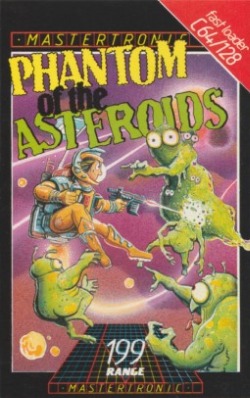
Phantom of the Asteroid is a side-scrolling action-adventure game released for the Commodore 64 in 1986. The cover art reads Phantom of the Asteroids, but the loading screen says Phantom of the Asteroid, while the title screen says Phantoms of the Asteroid. Sources variously use all three titles to refer to the game.
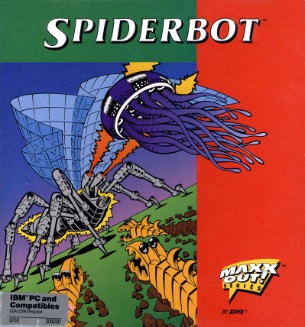
Arac is a side-view action-adventure game first released for the Commodore 64 in 1986 and ported to the Apple II and DOS.

Doriath is a side-view action-adventure platform game released for the Commodore 64 in 1985.
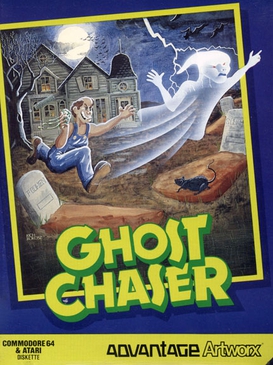
Ghost Chaser is a platform game designed by Frank Cohen and published in 1984 by Artworx for Atari 8-bit computers and Commodore 64. U.S. Gold published the game in Europe.



















